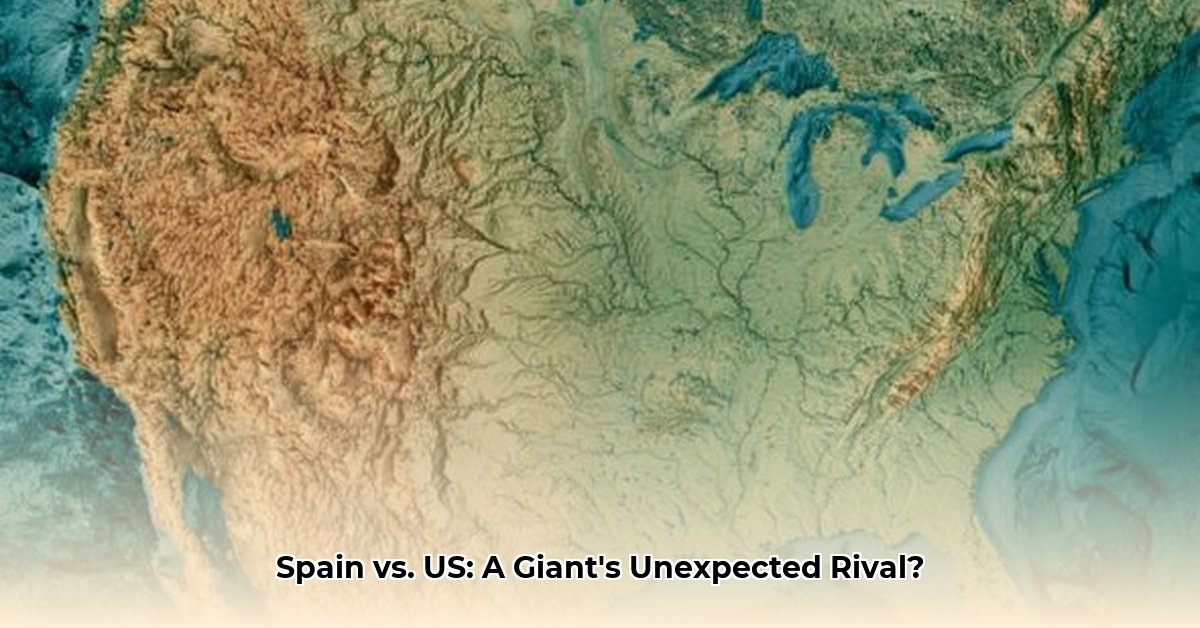
Spain's Size Compared to the US: A Geopolitical Overview
The sheer difference in size between Spain and the United States is immediately striking. The US, a continental giant, dwarfs Spain, nestled on the Iberian Peninsula. This disparity isn't merely geographical; it profoundly influences economic strategies, resource management, and international relations. But how significant is this difference, and what are the real-world implications? Let's explore the key dimensions of this comparison.
Land Area: A Continental Scale vs. the Iberian Peninsula
The United States boasts approximately nineteen times more land area than Spain. This vast difference impacts nearly every aspect of national life. Consider infrastructure development: building a nationwide highway system in the US involves a logistical undertaking of an entirely different scale than in Spain. This fundamental difference in scale shapes national strategies, from resource allocation to infrastructure planning. A simple, yet powerful, visual representation highlighting this difference using a comparative map would greatly enhance understanding.
Population Density: Sprawl versus Concentration
The population difference is equally dramatic. While exact figures fluctuate, the US population significantly exceeds that of Spain. However, population density tells a different story. The US, despite its larger population, features a considerably lower population density than Spain. This variation impacts resource consumption, infrastructure demands, and the very fabric of societal organization. The implications for urban planning, service provision (healthcare, education), and even cultural expression are considerable. How does this difference in population distribution affect social cohesion and resource availability? This is a key question requiring further examination.
Economic Output: Beyond Raw GDP
While the US possesses a vastly larger GDP than Spain, a more meaningful comparison requires analyzing GDP per capita. This metric accounts for population differences and provides a more nuanced perspective on economic productivity. Does the US’s massive land area translate into higher income per person? Or does Spain’s more concentrated economy yield different results? Furthermore, examining GDP per square kilometer offers a valuable comparison of land-use efficiency. A visually appealing graph comparing these economic metrics would enhance clarity and comprehension.
Resource Management: Abundance versus Concentration
The distribution of natural resources influences economic strategies. The US, with its vast territory, generally boasts greater diversity in resource availability. However, Spain might possess a higher concentration of certain valuable resources. Therefore, a simple comparison of total resources is insufficient. A more insightful analysis should consider resource concentration, accessibility, and the potential for sustainable management practices in each country. What are the key resource differences, and how do they shape each nation's economic policies?
Geopolitical Implications: Size and Global Influence
While size doesn't solely determine global influence, it’s an undeniable factor. The US’s vast size significantly contributes to its global prominence. However, Spain, despite its smaller geographical footprint, maintains significant international influence due to its historical weight, cultural significance, and strategic location. What are the most critical geopolitical implications stemming from this significant difference in size? This question deserves further analysis.
Conclusion: A Multifaceted Comparison
Comparing the sizes of Spain and the US transcends simple acreage calculations. It delves into the intricate interplay between geography, population, economy, resources, and global influence. The vast difference in size affects the challenges and opportunities faced by each nation, shaping their unique national character. Future research should focus on analyzing specific aspects of resource management, infrastructure efficiency, and national resilience strategies, considering the impact of geography on these key areas.
Three Pivotal Points:
- The sheer difference in land area between the US and Spain fundamentally impacts infrastructure development, resource management, and economic strategies.
- Comparing GDP per capita and GDP per square kilometer provides a more accurate assessment of economic productivity than simply comparing raw GDP figures.
- While size contributes to geopolitical influence, other factors like historical significance, cultural impact, and diplomatic relationships also play crucial roles.